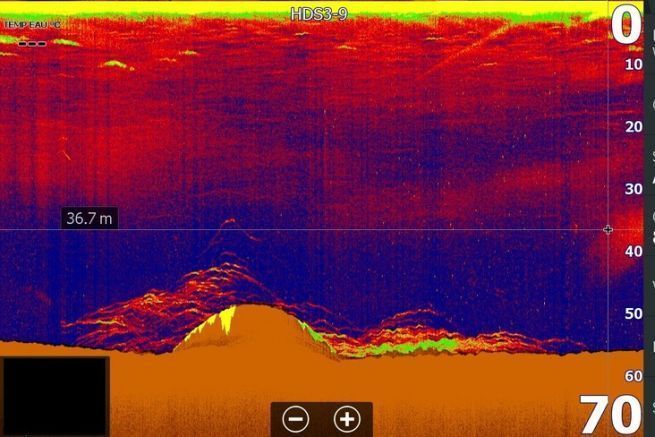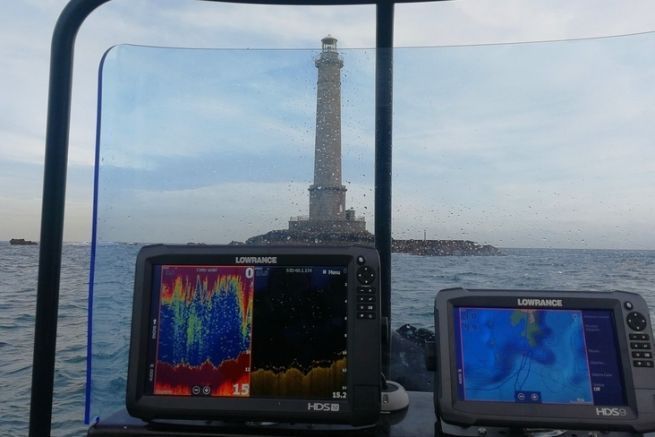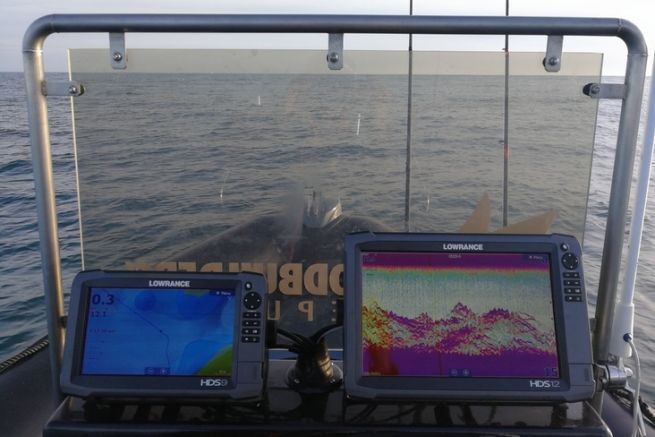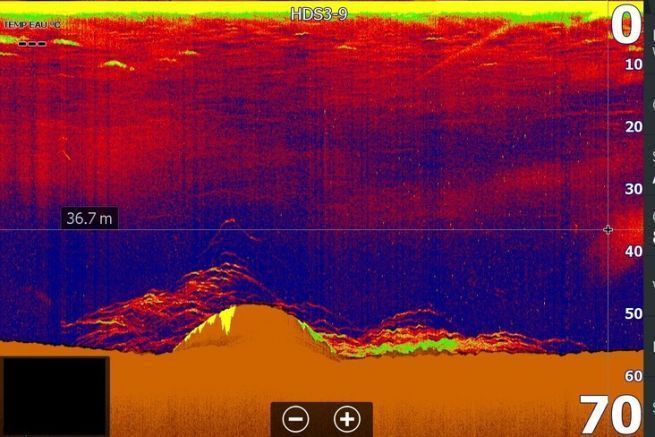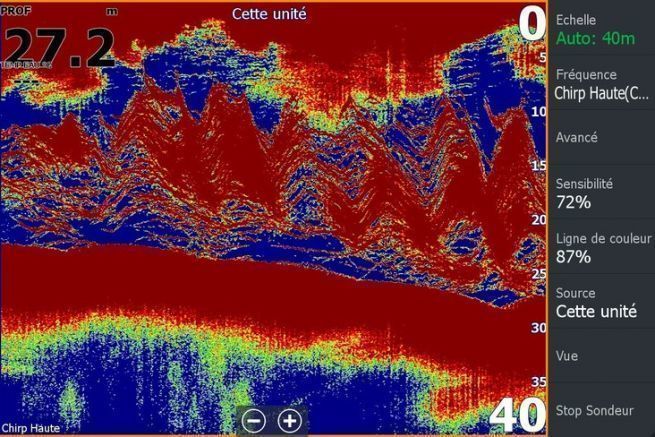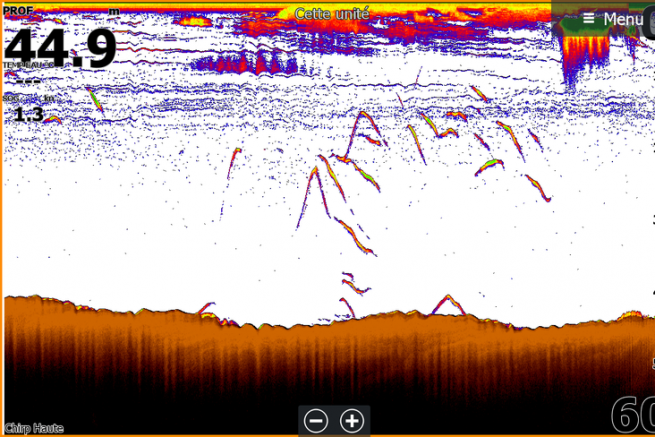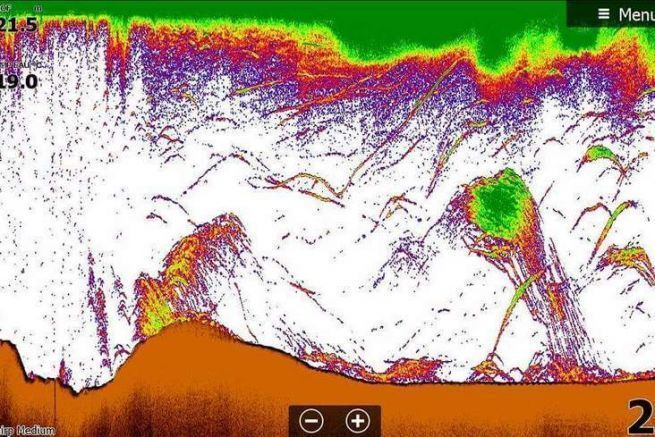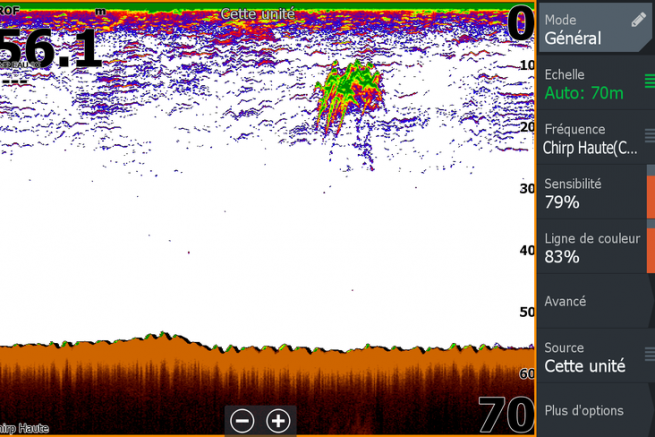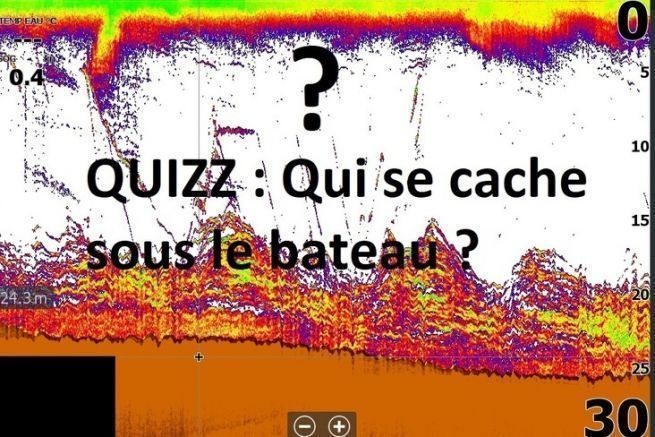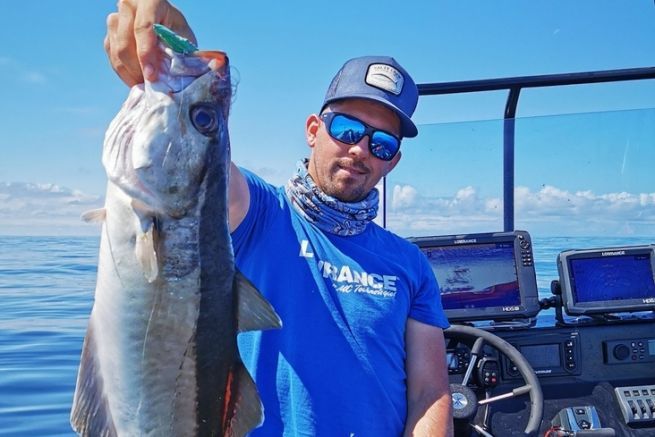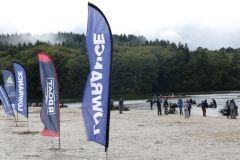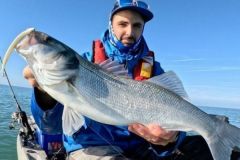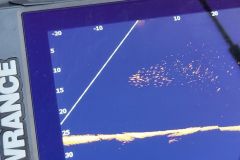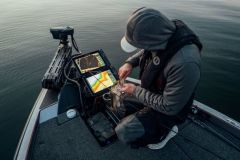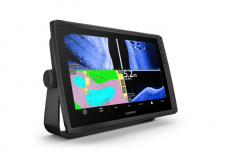The sounder is a valuable tool for prospecting. We have seen it in the previous report dedicated to this tool. Now, let's use it in fishing and analyze some situations through screenshots to help you understand and analyze the information transmitted to the screen.
The search for the wreck
Hopefully, it will be located at the exact spot shown on your navigation map. If it's not, search the surrounding area starting at the designated point on the map and spacing the rails. Once you find it, mark it with a waypoint. On the sonar, it will appear as a mound, more or less high as in the image below.
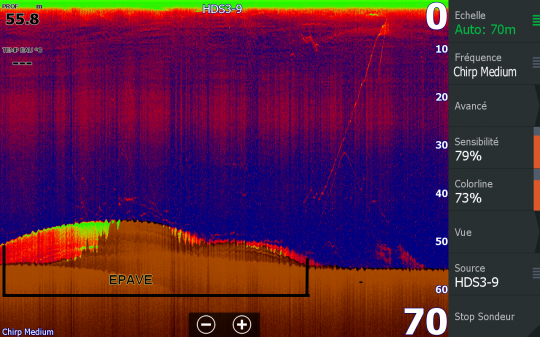
The choice of the frequency
At this depth, I work either in 200 kHz or in high chirp in order to have a detection range of about one third of the depth (about twenty meters in this case).
Using a frequency of 83 kHz would be a mistake because your cone would be so wide.
If you wish to fish exclusively wrecks or deep plateaus, i.e. with a minimum of 60m, a 50 kHz transducer will be appropriate. You can consult the article dealing with this subject available HERE .
Fish echoes
On such deep wrecks, it is rare to find sea bass. I have never found good detections of this fish even if some captures are quite possible. In our case, it is exclusively yelloweye. This fish, which particularly likes the fresh water of the depths, reigns in large numbers on the wrecks of the Channel. If you are looking for the trophy fish, there is a big chance that you will find it on this kind of spot.
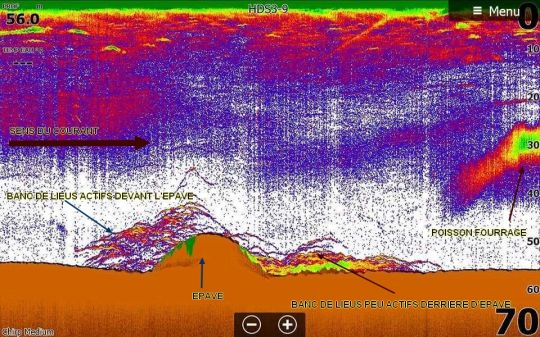
On this capture, a bank of leeches is present upstream of the wreck. The fact that the echoes are lifted from the bottom is a sign of the activity present in the area. They are facing the current which, here, should be around 1.5 knots. On the other hand, downstream, i.e. behind the wreck, some fish are present, very close to the bottom. Such a behavior is a sign of a rather weak activity even if it is possible to succeed in soliciting one.
In the first configuration with active fish, I have a preference for the jigging with a spearfisher . In the second case, a shad with a large paddle, reeled in slowly, usually triggers the attack.
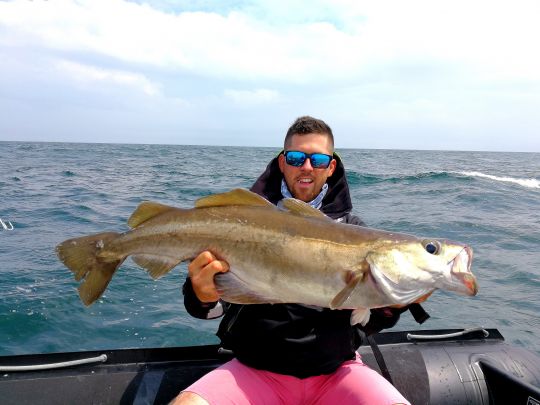
In this kind of situation, with active fish in front of the wreck, the fish are very reactive to the lures you will offer. The catches are fast. However, as soon as the current changes, there is a good chance that all this euphoria will come to a sudden halt.
Fish far behind the wreck
I noticed, during my trips, that when the activity initially present upstream of the wreck stops, it is common to find fishes far downstream of the wreck, i.e. behind, on the sand.
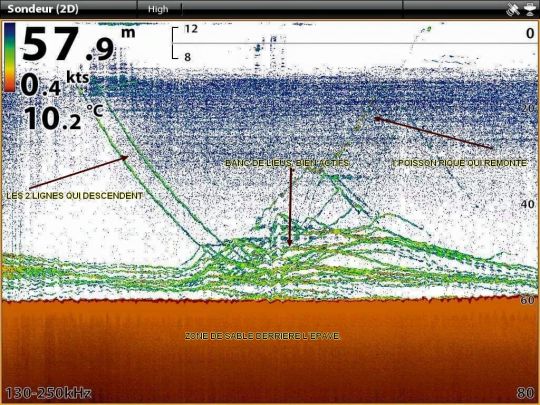
This capture shows an active school of leeches far behind the wreck.
We can see the 2 lines descending, which means they are well above the boat in the detection cone. A fish will be quickly hooked and you can follow its ascent with the sounder. The descent of the 2 lines was done right in the bank. You can see how useful a properly adjusted sonar unit can be with the right choice of transducer.
One of my hypotheses as to the fact of finding these fish behind the wreck lies in the fact that the strong activity upstream could have injured or weakened some preys. These preys, carried by the current, go directly downstream to the fishes which have only to feed easily.
I noticed that very often, the most beautiful catches are not made on the wreck itself but off the wreck.
Ãeuros retain
- On a wreck, use a 200 kHz or 50 kHz frequency.
- Do not hesitate to fish far behind the wreck.
- Use different types of lures (soft and jigs)

 /
/ 